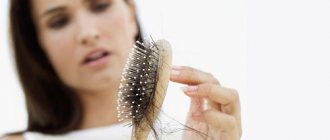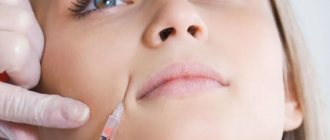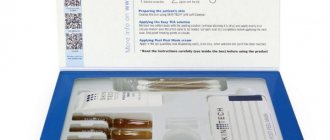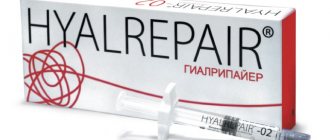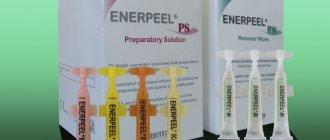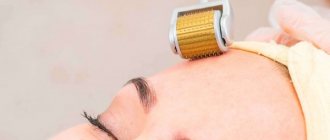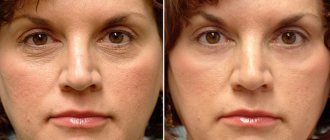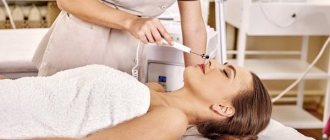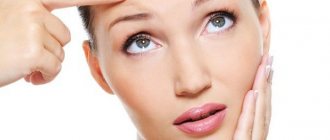Features of the autohemotherapy procedure, indications, contraindications and all the nuances of manipulation - all this interests people who have learned about such therapy.
In most cases, autohemotherapy is indicated for patients undergoing complex treatment of pathologies associated with immunodeficiencies.
These are chronic infections, ulcers of the gastrointestinal tract, dermatological diseases, as well as ailments that arise due to age-related changes in the body.
The technique first began to be used at the beginning of the twentieth century. Experts noted the same type of clinical results, in particular the stimulation of protective properties, accelerated recovery after operations and injuries, and increased mental and physical performance.
Today the procedure has become widespread in medicine and cosmetology.
The essence of the method
Autohemotherapy is a therapeutic technique that involves injecting the patient with his own blood. In most cases it is performed intramuscularly.
In essence, this is a transfusion that enhances hematopoiesis and increases the body's resistance to all kinds of diseases.
Scientists believe that human blood circulating through vessels is able to “remember” the processes occurring in the body. After the secondary entry into the body, the cells independently identify sources of inflammation and pathogenic microorganisms, destroying them.
Based on existing reviews from doctors, indications and contraindications, we can conclude that autohemotherapy is aimed at:
- increasing the body's immune defense;
- activation of hematopoietic processes and the hemostatic system.
After using the technique, there are usually no chills, joint damage, increased body temperature and other negative manifestations. The use of autohemotherapy is relevant not only for inpatient settings, but also for outpatient settings.
Indications and contraindications
| This section is missing references to information sources. Information must be verifiable, otherwise it may be questioned and deleted. You may edit this article to include links to authoritative sources. This mark was set on November 29, 2015 . |
Autohemotherapy is indicated for patients with infectious, chronic and pustular diseases. [ source not specified 1846 days
]
There are no contraindications as such for autohemotherapy. But in each individual case, the attending physician must deal with the problem. In rare cases, autohemotherapy may be contraindicated for various reasons. The patient must undergo a complete examination before prescribing therapy.
Subcutaneous or intramuscular injection of blood in large volumes is unacceptable, as this can lead to a pronounced local inflammatory reaction and general negative symptoms such as fever, chills, and muscle pain. If after the first procedure there is pain at the injection site, then the procedure should be postponed for several days.
The second important point, understandable even to a non-specialist, is maintaining sterility during the autohemotherapy procedure.
Contraindications for classical autohemotherapy are relative: for example, subcutaneous injection of one cubic centimeter of one’s own blood into a patient cannot harm him even in a critical situation, but in each specific case, issues of indications and contraindications are decided by the attending physician. The effectiveness and safety of ozone therapy has not been proven and therefore its use in autohemotherapy may even be harmful rather than beneficial.
There is an opinion that autohemotherapy is pseudoscientific, since blood that is not in the bloodstream is a breeding ground for microorganisms, which, if the rules of septic-antiseptics are violated, can lead to disastrous consequences such as post-injection abscesses and sepsis.
Autohemotherapy: indications for use
Subcutaneous or intramuscular injection of fresh venous blood has a beneficial effect on the entire body, strengthens protective functions, and suppresses inflammatory processes.
Among the indications for the use of autohemotherapy are the following conditions.
INDICATIONS
- dermatological pathologies: acne, blackheads, furunculosis, eczema, pustules, neoplasms;
- Chronical bronchitis;
- prolonged pneumonia;
- frequently recurring colds;
- gastrointestinal disorders;
- various immunodeficiency conditions;
- infectious, inflammatory lesions of the urinary system;
- poorly healing trophic ulcers;
- joint damage of an infectious nature;
- internal and nosebleeds;
- severe menopause;
- infertility.
In the presence of any pathologies, the technique cannot replace other methods of treatment: taking medications, surgery. Autohemotherapy is indicated for use as part of complex therapy.
Dermatologist Samir Bashey
The procedure is also used for provocative and diagnostic purposes. Thus, it is relevant when there is a suspicion of hidden infections.
The latest research has proven that autohemotherapy helps alleviate the symptoms of bronchial asthma with an allergic nature.
In the field of cosmetology, the technique is successfully used not only to combat various dermatological ailments, but also to slow down the aging process of the skin.
Contraindications (8 prohibitions)
Before using autohemotherapy, it is necessary to become familiar with the indications and contraindications.
It is important to identify and comply with the latter, otherwise serious negative consequences may occur. There are a number of restrictions on the procedure.
CONTRAINDICATIONS
- malignant neoplasms;
- active tuberculosis;
- hepatitis and other liver damage;
- pathologies of the cardiovascular system, kidneys;
- severe mental disorders;
- heart attack in the acute stage;
- period of pregnancy and breastfeeding;
- age under 18 years.
When performing autohemotherapy, it is not recommended to administer large volumes of blood. This threatens the occurrence of side effects: chills, muscle soreness, fever. Such complications are included in the list of contraindications to the use of the technique.
Features of the procedure
At the first session, about 1 ml of blood is injected subcutaneously into the patient. Over time, its volume increases until it reaches 10 ml. After this, the amount gradually decreases.
Typically the course consists of 10-15 sessions. About 2-3 days pass between them.
Injections that are made under the skin can cause the development of inflammatory processes and other negative consequences. It is important to remember this when giving consent to use the technique.
Dermatologist Sanusi Umar
For intramuscular administration, 2 ml of venous blood is used. Injections are placed in the upper outer square of the buttocks.
A repeat session is carried out after 1 or 2 days with an increase in blood to 4 ml, next time - to 6 ml and so on.
Based on indications, autohemotherapy is used according to the following scheme:
| Session | Quantity of material introduced |
| 4 | 8 ml |
| 5 | 10 ml |
| 6 | 10 ml |
| 7 | 8 ml with further reduction in blood volume |
The procedure is always performed in compliance with sterility standards. First, blood is taken from a vein, then injected under the skin or into a muscle.
Scheme of autohemotherapy
The autohemotherapy treatment regimen is classically recommended in a stepwise manner, carried out every other day -2, 4, 6, 8, 10, 8, 6, 4, 2. Doses are measured in milliliters. If tolerance is poor, injections are given after 2-3 days. By poor tolerance I mean severe pain at the injection site in the middle of the course, when the largest doses of blood are injected.
Quite often the regimen is adjusted and only 1 ml is added, but then the injections are prescribed every day. Scheme 1, 2, 3, 4, 5, 4, 3, 2, 1. This scheme is softer and easier to tolerate, but the effectiveness of blood treatment in this case is somewhat lower.
Types of autohemotherapy (5 options)
Like any other therapeutic method, autohemotherapy is constantly being improved. In modern medicine, the following procedure techniques are used:
- Hemopuncture. Blood is drawn from a patient's vein and then injected in small doses into painful areas throughout the body. The technique involves the use of biomaterial in its pure form or with the addition of homeopathic medicines.
- Stepped. It is the introduction of blood enriched with drugs. Previously, antibacterial drugs were used for this, but later experts abandoned this method.
- Use of autologous blood. Before administering the patient's blood, various manipulations are performed with it. This can be ozonation, X-ray or ultraviolet treatment, freezing. This procedure can only be performed in specialized institutions where there is suitable equipment. The doctor must have sufficient experience in this field.
- Combination with ozone therapy. Autohemotherapy in this case is carried out in compliance with indications and contraindications according to the traditional scheme. The only difference is that the blood is enriched with ozone. There are minor and major ozone autohemotherapy. The latter option involves taking 150 ml of blood, adding ozone and injecting it back into a vein. Experts say that the procedure is aimed at eliminating signs of chronic fatigue.
- Combination with hirudotherapy. Leeches are placed on problem areas of the patient’s body, then their own blood taken from a vein is injected there.
Question answer
Due to the peculiarities of the technique, it is not recommended to carry it out at home; it is better to do autohemotherapy in specialized institutions.
To understand that the method really works, you need to donate blood for analysis before and after using autohemotherapy. Typically, a course of treatment increases the number of leukocytes, which indicates an improvement in immune defense and a beneficial effect on the human body.
Negative manifestations are observed quite rarely. If any side effects are detected, honey compresses and iodine mesh must be applied to the injection site. If you experience a deterioration in your health or a significant increase in body temperature, you should immediately consult a doctor.
Autohemotherapy - review
Since I have all this, I performed the procedure myself at home. Of course, it is much easier when someone else takes your blood from a vein, but I have never looked for easy ways. And with proper training and skill, almost anything is possible.
I want to say that the heating pad recommended on some Internet resources for resolving lumps after intramuscular injections is not a very good option. On the contrary, it is possible to activate pain sensations due to sometimes appearing infiltrates. Much better is a classic iodine mesh for injection sites.
I was satisfied with the effect of autohemotherapy at the implementation stage - my tone increased, my skin cleared, the condition of my hair and nails improved, and the number of acute respiratory viral infections that plagued me decreased. Now I want to repeat a similar course of autohemotherapy again, this time with an eye to alleviating allergies.
Autohemotherapy in gynecology
The procedure can only be used in a hospital setting in compliance with sterility standards. It can be carried out by a midwife or a qualified nurse.
The main indications for the use of autohemotherapy in gynecology include the following problems.
- inflammatory pathologies: metritis, salpingitis and others;
- formation of adhesions in the internal genital organs;
- severe menopause;
- infectious lesions of the genital tract: herpes, HPV;
- inflammatory processes with purulent discharge;
- infertility.
The use of the technique for the treatment of gynecological diseases is contraindicated in the presence of inflammatory kidney lesions.
If pure blood is used, 5 ml is drawn from a vein and injected into the gluteal muscle, in accordance with intramuscular injections.
At each subsequent session the amount increases by 1 ml. When the volume reaches 10 ml, there is a gradual decrease daily until the amount returns to 5 ml.
The course of use consists of 10 procedures, which are performed every day or every other day.
Obstetrician-gynecologist Marco Pelosi
In gynecology, hemolyzed blood is also used, that is, autologous blood mixed with sterile double-distilled water and subjected to various manipulations.
After autohemotherapy there are practically no complications observed. An increase in temperature and discomfort at the injection sites are possible, however, they are not contraindications to the use of the method.
To get rid of negative manifestations, the doctor changes the dose of the injected material or the method of influencing it.
Operating principle
The procedure consists of collecting the patient's venous blood and then injecting it under the skin, intramuscularly or intravenously. With such manipulation, the body associates its own blood with a foreign substance. The process of maximum production of protective cells begins, which subsequently recognize the blood as “native”. Therefore, the action of the produced cells is redirected to pathological processes in the body.
The effect of autohemotherapy is to activate the immune system.
The results of such procedures:
- activation of protective processes in the body;
- activation of metabolic reactions;
- increased vitality;
- activation of brain and physical activity;
- accelerating wound healing and stopping the development of purulent processes;
- accelerating the removal of waste and toxins from the body.
Return to contents
Scheme of autohemotherapy for boils
The technique according to the classical scheme is quite simple: blood is taken from a vein and injected into the gluteal muscle. The treatment regimen consists of 10–20 procedures. For the first 10 days, the introduction is increasing. On the first day, 1 ml is administered, then every day the blood volume is increased by 1 ml, and on the 10th day it is 10 ml. Then a descending scheme is applied - by 1 ml every day. There are schemes of 10 procedures. The blood volume is increased every day by 2 ml, brought to 10 ml, then decreased daily by 2 ml and brought to 2 ml. If the procedure is prescribed along with medications, then they are additionally added to the syringe before injection into the muscle.
Major autohemotherapy is somewhat reminiscent of a blood transfusion procedure. It can only be carried out by a qualified specialist. For this, venous blood is taken in a large volume (100-150 ml). Then it is specially prepared for re-injection into the vein, it is specially shaken, an ozonation technique is carried out, medicinal substances are introduced, or a special device is used for ultraviolet treatment (directly during the re-infusion of blood). The procedure must be done according to a strict regimen using Heparin.
Autohemotherapy in cosmetology
As mentioned above, this procedure is relevant for dermatological diseases. This includes acne, pimples, eczema.
Do not confuse autohemotherapy and plasma lifting. These procedures are different.
Autohemotherapy helps speed up wound healing and eliminate acne. Experience shows that about 80% of patients who have undergone manipulation experience positive changes.
But the effect of the procedure will quickly disappear if a person forgets about home care.
There is also an opinion that with the help of such a procedure it is possible to rejuvenate the face, but there is no exact data, since research is only underway.
This procedure leads to increased immunity. As a result, the body fights infections better. That is why autohemotherapy will help get rid of the rash if its appearance is associated with pathogenic flora. If the cause is hormonal imbalance or pathology of the reproductive system, then the procedure will be powerless.
Dermatologist Ben Behnam
Side effects
Even when indications and contraindications are taken into account, sometimes autohemotherapy can lead to negative consequences, as some patient reviews indicate.
This is usually due to the density, viscosity and other properties of the blood. After attending a session, patients may experience the following side effects:
- formation of compactions at puncture sites, painful sensations on palpation;
- the formation of inflammatory processes due to insufficient sterility of instruments;
- rejection of biomaterial by the immune system.
The procedure is not particularly popular, since after it a person is faced with a hematoma and there is a risk of an inflammatory process.
You should also expect swelling and deterioration in well-being.
Efficiency of the procedure
Some time after attending the session, you may notice positive changes. Among them are:
- acceleration of wound healing, rehabilitation after injuries;
- faster recovery after surgery;
- healing and cleansing of the skin;
- elimination of inflammatory processes in the body;
- activation of metabolism;
- improvement of well-being and psychological state;
- increasing endurance, vitality, and ability to work;
- removal of toxic substances and waste.
Price per procedure
After studying the indications and contraindications for autohemotherapy, you can contact specialists from public or private medical institutions and find out the price of the service.
The cost of manipulation will depend on the injection site and the appropriate regimen of use.
So, the traditional method will cost about 800 rubles, the stepwise method is more expensive, 1,500 rubles. The most expensive procedure is the one using ozone. Prices for it can reach up to 2000 rubles.
Autohemotherapy will help in the fight against acne. Indications and contraindications
When a person has acne on the skin, autohemotherapy is prescribed quite often. In order to get rid of problems, it is necessary to activate the immune system. Autohemotherapy copes with this task as well as possible.
Where is autohemotherapy performed? We will consider indications and contraindications for the procedure below. Now let's talk about the venue. A course of autohemotherapy is carried out in beauty salons. Before starting the procedure, you must consult with a cosmetologist who will determine what treatment plan will be followed. When carrying out the procedure, the figure of eight principle is used. It consists of inserting a blood sample taken from the arm into the opposite buttock. To make the procedure less painful, everything is done slowly. And it is better for the person receiving the blood to try to relax as much as possible. Because if the muscles are tense, the pain will be stronger.
Reviews
JULIA, 53 YEARS OLD:
“For several years I suffered from severe symptoms of menopause.
My blood pressure was skyrocketing, I was often dizzy, I didn’t sleep well and constantly felt tired. The doctor advised me to undergo autohemotherapy and talked about the indications and contraindications of the technique in gynecology. At first it was a little scary, but then I decided to try everything.
After the course of injections, I noticed positive changes: more energy appeared, dizziness went away, and my ability to work increased. I recommend!"
ANNA, 24 YEARS OLD:
“My main problem since adolescence has been acne, and what I haven’t done about it.
Still, ugly ulcers appeared on the face, and then they spread to the back and arms. It became completely impossible to tolerate this, and I went to a dermatologist, who prescribed autohemotherapy.
They do it for free at the clinic, and already halfway through the course I noticed an improvement in my condition. There are no side effects, the results can’t help but rejoice.”
How does the procedure work?
Previously, cosmetologists did subcutaneous injections. This made it possible to achieve the desired result, but there was a side effect in the form of hematomas. Injections began to be given intramuscularly. After them, no traces remain on the face, and the effect remains.
The procedure goes like this: blood is taken from a vein from the patient and injected into the muscles, usually the buttocks, on the opposite side. So, if blood was taken from the right arm, then an intramuscular injection is made to the left side. The course starts with 2 ml. and continue increasing with a factor of 2. The procedure is carried out every other day for 10 days, sometimes more.
Expert opinion
- Cosmetologist
- Surgeon
Deborah Longwill
practicing dermatologist-cosmetologist
The procedure cannot be performed efficiently at home. The technique is among the alternative treatment methods. Until now, its features have not been studied in detail by official medicine. Before going to the session, you must consult a doctor.
Aisha Baron
plastic surgeon
Of course, autohemotherapy has many advantages.
But it is more of an auxiliary procedure. It can help fight chronic pathologies and infections, but it will not in any way affect the removal of toxins, the health of the nervous, endocrine system, etc. They are not referred for the procedure if a person urgently needs medication or surgical intervention. Autohemotherapy appeared at the beginning of the last century, but has not yet lost its relevance. With its help, you can get rid of many diseases, strengthen the body's defenses, quickly recover from injuries, and improve the appearance of the skin.
You should first consult with a specialist, undergo a medical examination, and only after that make a decision about the possibility of using the technique.
Story
Autohemotherapy emerged at the beginning of the 20th century. The first successful experience of autohemotherapy was described in 1905 by surgeon August Beer. He used it to treat fractures by creating artificial hematomas. [ source not specified 1846 days
]
During the Russo-Japanese War at the beginning of the 20th century, Russian surgeon Valentin Feliksovich Voino-Yasenetsky used autohemotherapy. The purpose of application is the treatment of soldiers. In his work “Essays on Purulent Surgery,” he described methods of therapy. He used autohemotherapy as an adjuvant in the treatment of various indolent human diseases. This method was widely used before the advent of antibiotics. All scientists who studied autohemotherapy noted an increase in the body’s performance, tone, the appearance of vitality and, most importantly, the human immune system was strengthened.
Subsequently, attempts were made, using autohemotherapy, to strengthen the protective reactions of patients with infectious diseases, furunculosis, chronic inflammatory diseases of the female reproductive system, etc.

